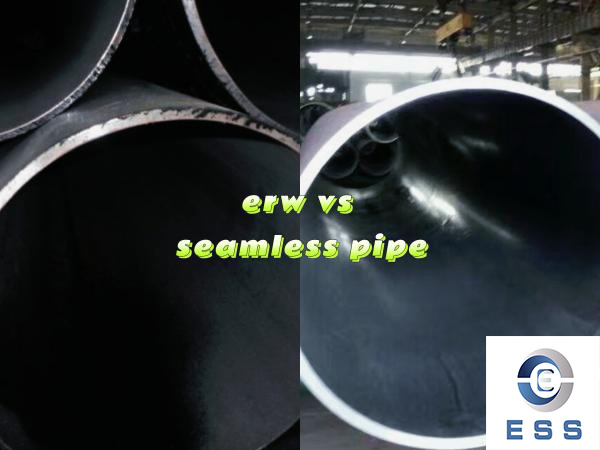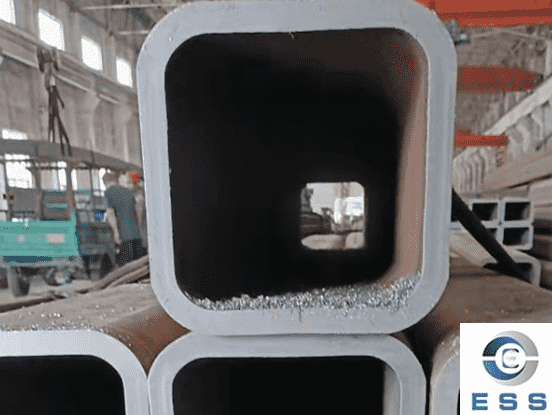What are the differences between erw vs seamless pipes in classification?
"
ERW pipe" is a straight seam electric resistance welded pipe, which is used to transport vapor and liquid objects such as oil and natural gas, and can meet various requirements of high and low pressure. The
seamless steel pipe is made by perforating the whole round steel, and the steel pipe without weld seam on the surface is called seamless steel pipe. Seamless steel pipes are mainly used as petroleum geological drilling pipes, cracking pipes for petrochemical industry, boiler pipes, bearing pipes, and high-precision structural steel pipes for automobiles, tractors, and aviation.

1. Different categories
ERW pipe:
Welded pipes are round pipes welded by steel plates, which are divided into high-frequency electric resistance welded pipes (ERW pipes), straight seam arc welded pipes (LSAW), and spiral welded pipes. In electrical engineering, "SC" is used to indicate that it can be used as a water gas pipe or a threading pipe, and it is relatively thick. The line pipe is also the wire pipe, which is relatively thin and is represented by "T", and it can only be used as a threading pipe. ERW pipe is a "high-frequency resistance welded steel pipe". It is different from the welding process of ordinary welded pipes. The weld seam is formed by melting the base material of the steel strip body, and its mechanical strength is better than that of ordinary welded pipes. ERW means resistance welding. Resistance welding has the characteristics of high production efficiency, low cost, material saving, and easy automation. Therefore, it is widely used in various industrial sectors such as aviation, aerospace, energy, electronics, automobiles, and light industry. It is one of the important welding processes. one.
Seamless steel pipe:
A steel pipe that is seamless along the perimeter of its cross-section. According to different production methods, it is divided into hot-rolled pipe, cold-rolled pipe, cold-drawn pipe, extruded pipe, pipe jacking, etc., all of which have their own process regulations. The materials include ordinary and high-quality carbon structural steel (Q215-A~Q275-A and No. 10~50 steel), low alloy steel (09MnV, 16Mn, etc.), alloy steel, stainless acid-resistant steel, etc. According to the purpose, it is divided into two categories: general purpose (for water, gas pipelines and structural parts, mechanical parts) and special purpose (for boilers, geological exploration, bearings, acid resistance, etc.).
2. The biggest difference between the two
The biggest difference between ERW steel pipe and seamless steel pipe is that ERW has a weld seam, which is also the key to the quality of ERW steel pipe. Modern ERW steel pipe production technology and equipment, due to the unremitting efforts of the world, especially the United States, have made the seamlessness of ERW steel pipes a relatively satisfactory solution. Some people divide the seamlessness of ERW steel pipes into geometric seamlessness and physical seamlessness. Geometric seamlessness is to remove the internal and external burrs of ERW steel pipes. Due to the continuous improvement and improvement of the structure of the internal burr removal system and the cutting tools, the removal of the internal burrs of large and medium-diameter steel pipes has been better handled. The internal burr can be controlled at about -0.2mm ~ O.5mm.
Physical seamlessness means that there is a difference between the metallographic structure inside the weld and the base metal, which leads to a decrease in the mechanical properties of the weld area, and measures need to be taken to make it uniform and consistent. The high-frequency welding heat process of ERW steel pipe causes the temperature distribution gradient near the edge of the tube blank, and forms characteristic areas such as melting zone, semi-melting zone, overheated structure, normalizing zone, incomplete normalizing zone, and tempering zone. Among them, due to the welding temperature above 1000°C in the superheated zone, the austenite grains grow rapidly, and a hard and brittle coarse-grained phase will be formed under cooling conditions. In addition, the existence of temperature gradients will generate welding stress. In this way, the mechanical properties of the weld area are lower than those of the base metal. The physical seamlessness is to heat the weld area to AC3 (927°C) with a medium-frequency induction heating device through the local conventional heat treatment process of the weld, and then carry out 60m Air cooling process with length and speed at 20m/min, and water cooling when necessary. The use of this method achieves the purpose of eliminating stress, softening and refining the structure, and improving the comprehensive mechanical properties of the welding heat-affected zone.
So far, advanced ERW units in the world have generally used this method to process welds, and good results have been obtained. The high-quality ERW steel pipe is not only unable to distinguish the weld seam, but also has a weld seam coefficient of 1, which realizes the matching of the weld seam area structure and the base material.













 Eastern Steel Manufacturing Co.,Ltd not only improve product production and sales services, but also provide additional value-added services. As long as you need, we can complete your specific needs together.
Eastern Steel Manufacturing Co.,Ltd not only improve product production and sales services, but also provide additional value-added services. As long as you need, we can complete your specific needs together.










